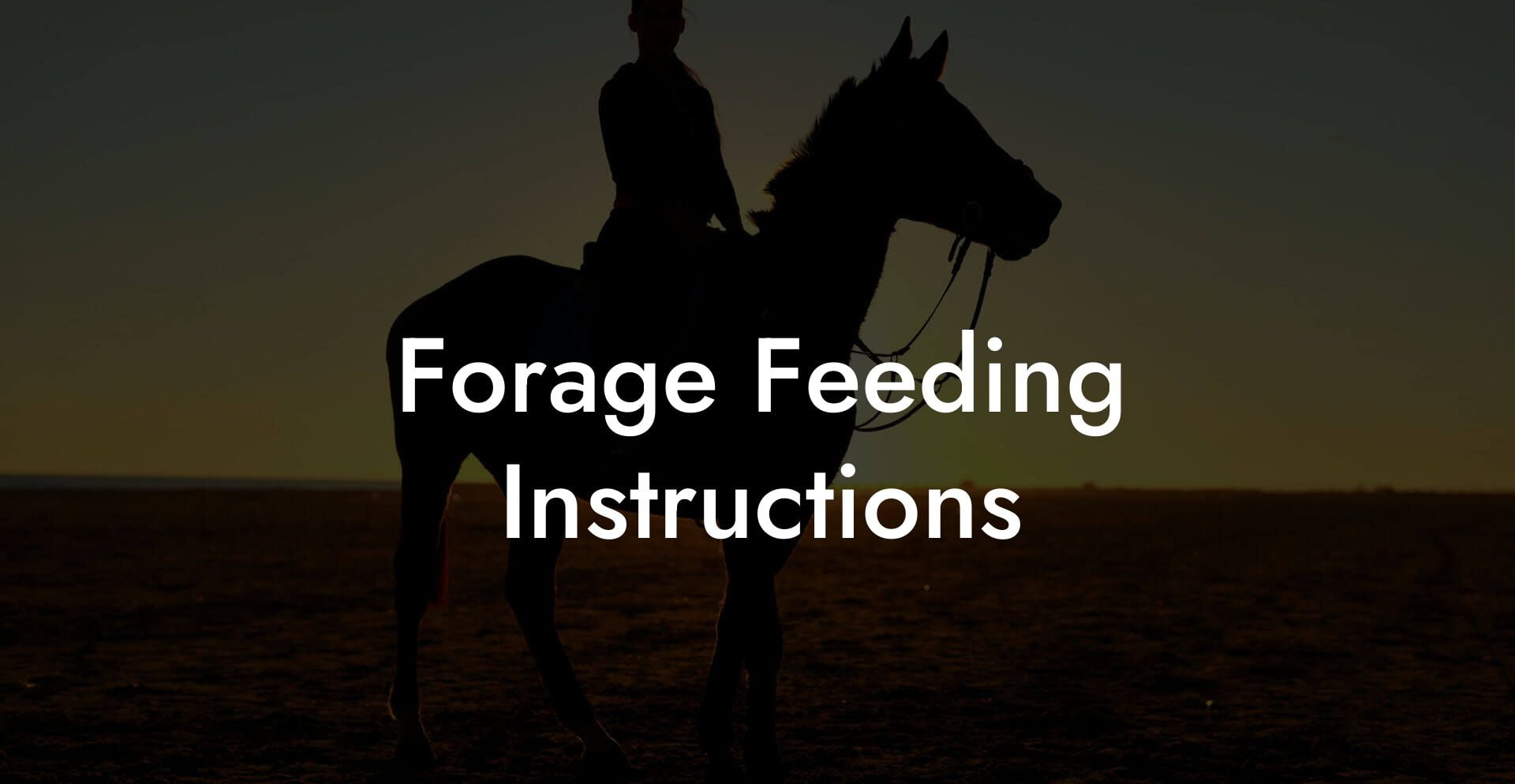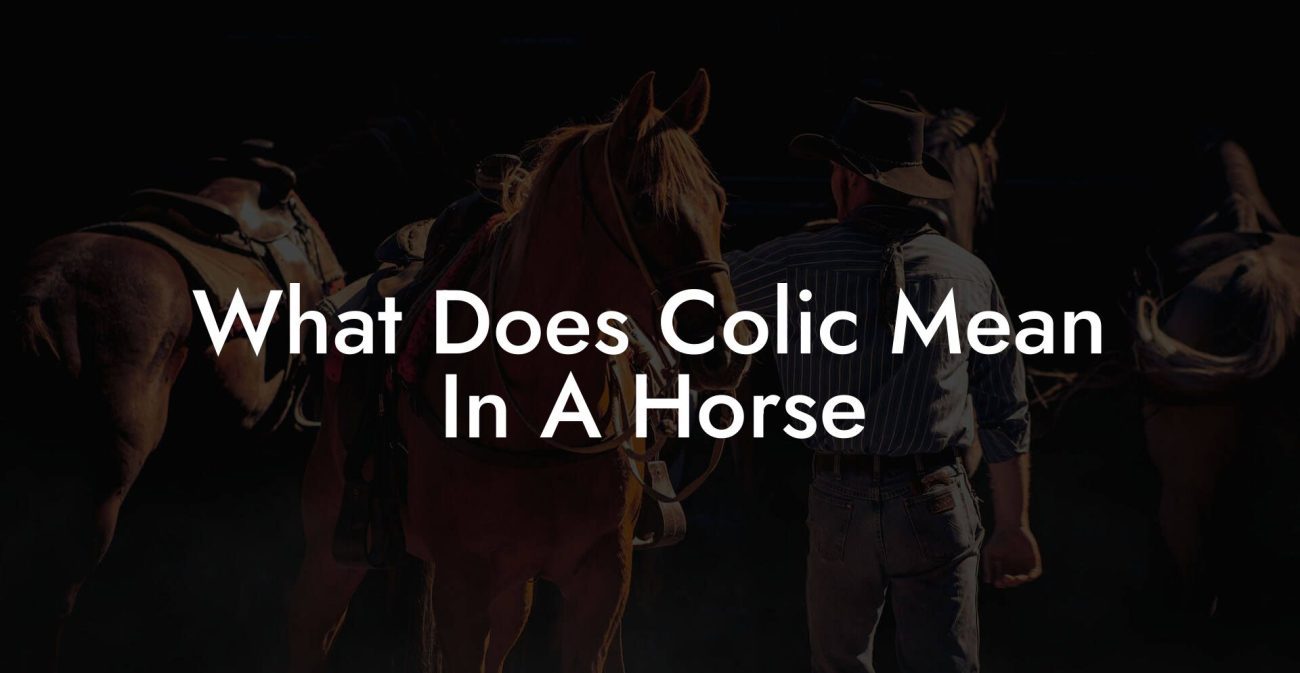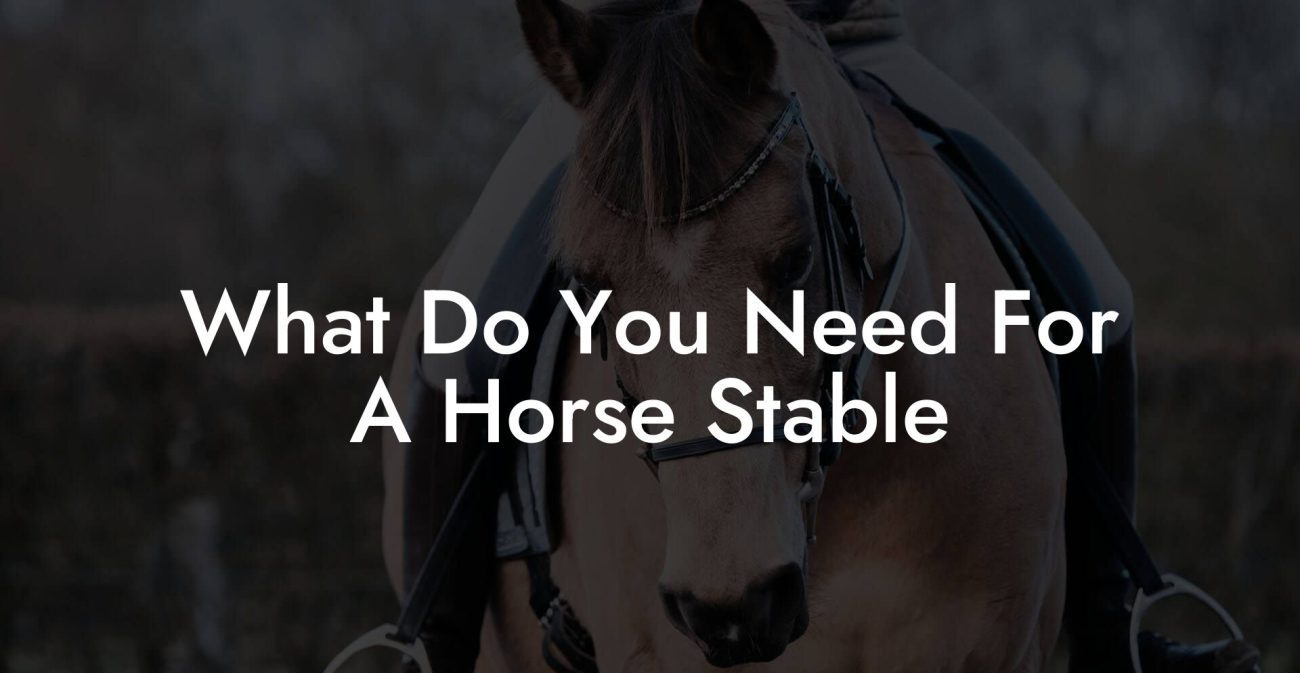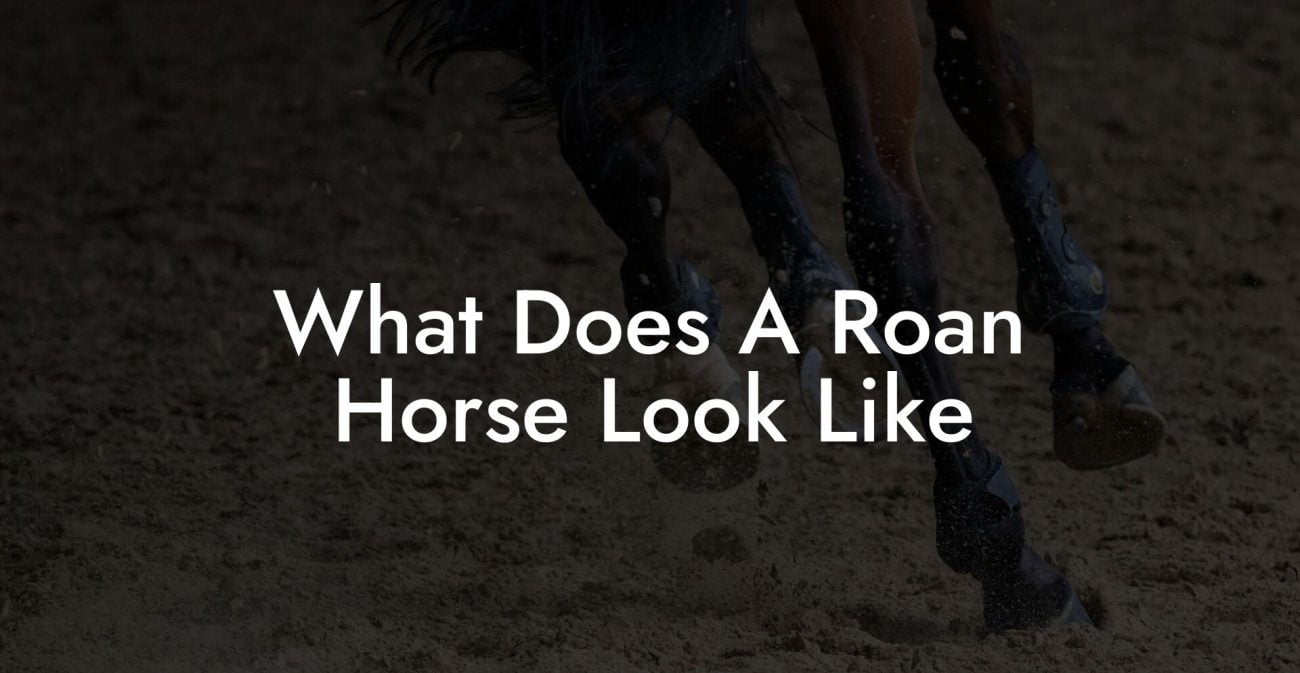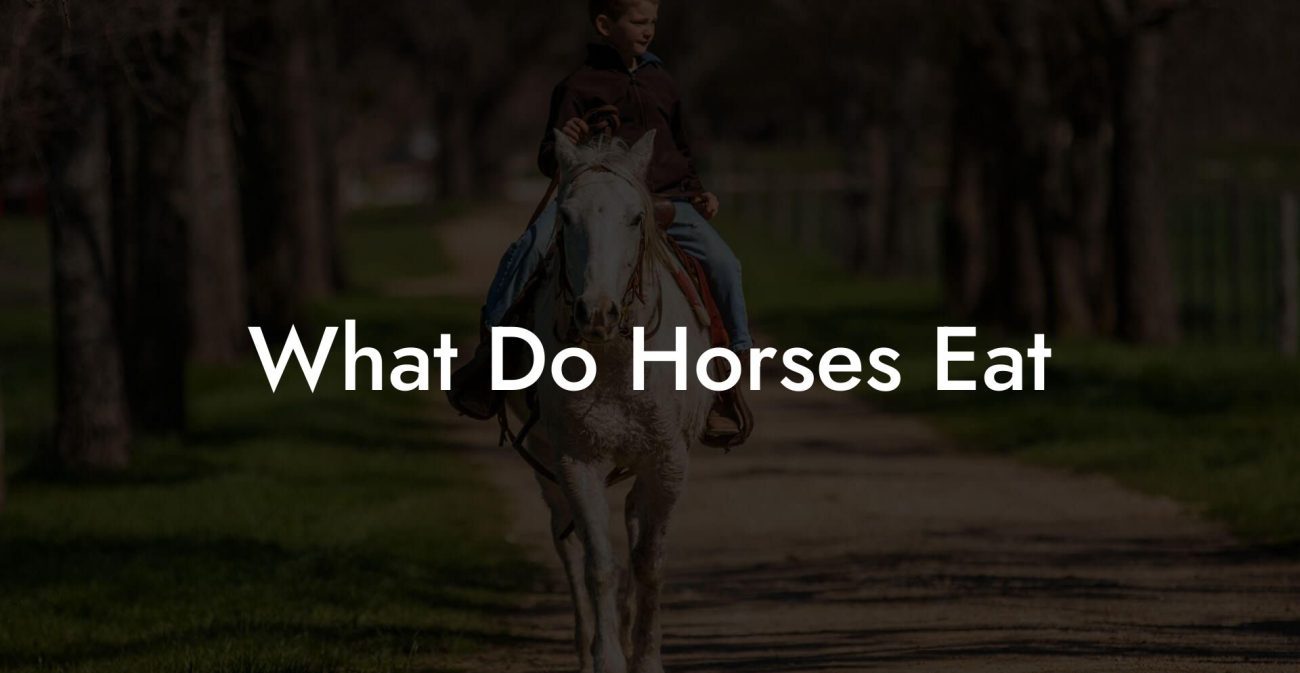When it comes to giving your horse the ultimate feed fiesta, forage feeding isn’t just about tossing hay in a stall, it’s an art, a science, and a full-on lifestyle. Picture your four-legged friend grazing like the superstar they are, flourishing on nutrient-rich hay, lush pasture, and the perfect balance of fiber. Whether you’re a first-time horse owner or a seasoned equestrian, these forage feeding instructions are designed to help you navigate the world of healthy horse nutrition, all with a fun, easygoing vibe that speaks to Gen-Z and millennial horse enthusiasts.
Quick Links to Useful Sections
- Understanding Forage Feeding: The Cornerstone of Equine Nutrition
- Why Forage Is the MVP in Your Horse’s Diet
- Getting to Know Your Forage Options
- Grass Pasture
- Hay: The Reliable Stand-In
- Additional Forage Sources
- How to Effectively Feed Forage: Step-by-Step Instructions
- Step 1: Evaluate the Forage Quality
- Step 2: Determine the Right Amount
- Step 3: Create a Regular Feeding Schedule
- Step 4: Offer Variety
- Step 5: Monitor and Adjust
- Addressing Special Dietary Needs and Considerations
- Youth and Growing Horses
- Seniors with Sensitive Stomachs
- Performance and Working Horses
- Horses with Metabolic Concerns
- Transitioning to a Forage-Based Diet
- Step 1: Gradual Integration
- Step 2: Monitor Digestive Response
- Step 3: Consistency Is Key
- Step 4: Consult Your Equine Nutritionist
- Forage Storage and Handling: Keeping It Fresh and Nutritious
- Proper Hay Storage
- Handling and Feeding Techniques
- Pasture Management
- Integrating Forage Feeding with Comprehensive horse care
- Regular Health Check-Ups
- Exercise and Mental Stimulation
- Hydration and Supplementation
- Real-Life Forage Feeding Transformations: Case Studies
- Case Study 1: The Transformation of Daisy
- Case Study 2: Revitalizing the Golden Years for Old Joe
- Case Study 3: Boosting Performance with Forage Fuel
- Your Personal Forage Feeding Plan: Your Next Steps Towards Equine Wellness
- Step 1: Conduct a Thorough Assessment
- Step 2: Set Clear, Realistic Goals
- Step 3: Mix and Match Your Forage Options
- Step 4: Implement a Consistent Feeding Routine
- Step 5: Track Progress and Be Flexible
- FAQ: Forage Feeding Instructions for Healthy Horse Care
- Your Journey to a Healthier Horse Through Forage Feeding
Understanding Forage Feeding: The Cornerstone of Equine Nutrition
Forage feeding is more than just a method of feeding, it’s the backbone of a healthy equine diet. At its core, forage provides high-quality fiber, essential vitamins, and a natural way for horses to carry out behaviors that go back millions of years. Whether your horse grazes on pasture or enjoys premium hay, understanding why forage is so critical will change the way you see feeding time.
Horses are designed to graze continuously, and their digestive systems have evolved to process fibrous forage over long periods. By prioritizing forage in your horse’s diet, you help maintain optimal gut health, reduce the risk of colic, and ensure steady energy levels throughout the day. In contrast to grain-heavy diets that can lead to imbalances and unwanted health issues, a forage-based feeding plan mimics nature’s design.
In this guide, we’ll dive into the nuances of forage feeding instructions, exploring everything from choosing the right type of hay or pasture to handling, storage, and even troubleshooting common issues. Think of it as your go-to resource for all things forage, guaranteed to empower you to give your horse top-notch care with confidence and flair.
Why Forage Is the MVP in Your Horse’s Diet
It’s simple: forage is nature’s original superfood for horses. Rich in fiber, low in starch, and packed with a variety of essential nutrients, forage feeding is like giving your horse a daily spa day for their digestive system. Here are some reasons why forage is the most valuable part of an equine diet:
- Digestive Health: Forage promotes proper chewing, increases saliva production, and aids in the crucial process of fiber digestion, which is essential for maintaining a healthy gut microbiome.
- stable Energy Levels: By providing a slow, steady release of energy, forage helps stabilize blood sugar levels, keeping your horse’s energy consistent throughout the day.
- Natural Behavior: Horses are built to graze for 16 hours a day. Forage feeding satisfies that innate behavior, reducing boredom and curbing stress and stereotypic behaviors.
- Low Risk of Disorders: A forage-based diet minimizes the risk of metabolic disorders such as laminitis and colic, which can be triggered by high starch and sugar levels found in concentrates.
Embracing a forage-first mindset is about returning to what’s natural for a horse. It’s about creating a balanced, stress-free feeding environment that fosters not only physical health but also mental well-being.
Getting to Know Your Forage Options
Not all forage is created equal. Depending on where you live, the season, and even your horse’s specific needs, you might choose from a variety of forage options. Understanding the differences can make all the difference in optimizing your horse’s diet.
Grass Pasture
Nothing beats the real deal when it comes to grass pasture. If conditions allow, grazing on a lush, well-managed pasture is ideal, your horse gets an abundance of natural nutrients, light exercise, and the chance to socialize with other horses. However, managing pasture quality is key because overgrazing or poor maintenance can lead to nutritional deficiencies or uneven growth.
Hay: The Reliable Stand-In
When pasture is out of season or not available, hay becomes the go-to forage. There are several types of hay to consider:
- Timothy Hay: A favorite among horse owners for its balanced nutrient content and palatable texture.
- Orchard Grass: Known for its coarser texture and rich fiber, perfect for horses with higher fiber needs.
- Bermuda or Ryegrass: These varieties are often used in warmer climates for their high palatability and nutrient profiles.
The quality of your hay is paramount. Look for a product that is free from mold, dust, and weeds, ensuring that your horse is receiving not only a tasty meal but also one that’s nutritionally robust.
Additional Forage Sources
In some cases, you might explore alternative forage sources such as silage or haylage. These options can be beneficial in certain climates or for horses with specific dietary restrictions, but they come with their own storage and handling requirements which we’ll discuss in a later section.
How to Effectively Feed Forage: Step-by-Step Instructions
Now that you understand the benefits and types of forage available, let’s get into the nitty-gritty of how to feed forage effectively. Whether you’re feeding grass, hay, or a mix, the following step-by-step instructions will ensure your horse receives optimal nutrition and enjoys every bite.
Step 1: Evaluate the Forage Quality
Start with a thorough evaluation of your forage. For pasture, test the soil quality and ensure the grass is well-maintained. For hay, check for any signs of mold, dust, or discoloration. Quality control is critical because even the best feeding strategy can falter if the substrate is compromised.
Step 2: Determine the Right Amount
A general rule of thumb is that horses should consume approximately 1.5-2% of their body weight in forage every day. However, this can vary based on activity levels, age, and overall health. Monitor your horse’s body condition and adjust portions accordingly.
Step 3: Create a Regular Feeding Schedule
Horses thrive with consistency. Design a daily routine that mimics natural grazing patterns. Instead of a few large meals, consider multiple smaller feedings throughout the day. This not only keeps the digestive system humming along smoothly but also reduces the risk of digestive upsets.
Step 4: Offer Variety
Variety is the spice of life, even for horses. Mix different types of forage when possible to provide a balanced nutrient profile. Alternating between different hay types or combining fresh pasture with hay can stimulate appetite and enhance overall nutrition.
Step 5: Monitor and Adjust
Regular observation is key. Keep an eye on your horse’s weight, coat condition, and behavior. If you notice any issues such as weight loss, lethargy, or digestive troubles, it might be time to adjust the feeding plan or consult with your equine nutritionist.
Following these steps not only maximizes your horse’s nutritional intake but also reinforces natural behaviors that lead to a happier, healthier life. Plus, a well-fed horse is much more likely to exhibit that iconic playful spirit that makes every ride an adventure.
Addressing Special Dietary Needs and Considerations
Just as every human is unique, so is every horse. Factors like age, activity level, and underlying health issues can all influence how much and what type of forage a horse should consume. Here are some tailored insights to ensure your feeding plan meets your horse’s individual needs:
Youth and Growing Horses
Young horses are like sponges, they’re growing rapidly and require a diet rich in quality forage to fuel their development. Ensure that the forage is not overly mature or fibrous, as younger horses might struggle with very coarse hay. Including a mix of high-quality pasture and tender hay can help meet their nutritional demands without compromising digestion.
Seniors with Sensitive Stomachs
Older horses may have diminished digestive efficiency. For senior horses, it’s crucial to provide forage that is easy on the stomach. Opt for softer, more palatable hay and consider soaking the hay before feeding to reduce dust and improve digestibility. Regularly monitoring dental health is also essential since chewing efficiency declines with age.
Performance and Working Horses
Athletic horses or those engaged in regular work require a balanced diet that supports prolonged energy output and muscle recovery. While forage remains the foundation, make sure your high-performance horse’s diet is supplemented appropriately, consult your veterinarian or equine nutritionist for guidance on managing energy intake without jeopardizing gut health.
Horses with Metabolic Concerns
Horses prone to conditions like Equine Metabolic Syndrome (EMS) or insulin resistance benefit from a diet that emphasizes low sugar and starch levels. Forage feeding in these cases should be carefully managed to avoid excess calories while still providing adequate fiber. Consider using soaked hay or grazing muzzles if pasture quality is too rich.
Tailoring your forage feeding instructions to meet the specific dietary needs of your horse ensures that they receive precise nutrition without risk. This way, you protect their health, enhance performance, and contribute to a long, happy life in the pasture.
Transitioning to a Forage-Based Diet
Switching up your horse’s diet might seem daunting, but transitioning to a forage-based regimen can be smooth and highly beneficial with the right strategy. Whether you’re moving away from a grain-heavy diet or adding more forage to an already balanced menu, follow these actionable steps to make the change seamless:
Step 1: Gradual Integration
Abrupt changes in diet can upset even the hardiest digestive systems. Begin by slowly introducing new forage over several days or weeks, gradually increasing the proportion of forage while reducing grains or concentrates. This gradual process helps the microflora in the digestive system adjust.
Step 2: Monitor Digestive Response
Keep a close eye on your horse’s manure, appetite, and energy levels. If you notice signs of discomfort, such as diarrhea or a decrease in feed intake, slow down the transition process even further. Patience is key!
Step 3: Consistency Is Key
Once you’ve made the switch, maintain a consistent feeding schedule. Consistency helps stabilize your horse’s digestive system and ensures that the benefits of forage feeding, including improved digestion and energy release, are fully realized.
Step 4: Consult Your Equine Nutritionist
It doesn’t hurt to get expert advice. A professional equine nutritionist can help design a custom transition plan based on your horse’s specific needs, ensuring that every aspect, from portion sizes to nutrient balance, is just right.
Transitioning to a forage-based diet is an investment in your horse’s long-term health. By taking a careful, measured approach, you not only enhance their digestive function but also promote more natural feeding behaviors that lead to overall well-being.
Forage Storage and Handling: Keeping It Fresh and Nutritious
One of the most overlooked aspects of forage feeding instructions is how you store and handle your forage. Poor storage practices can drastically reduce the quality of your hay or pasture substitutes, potentially exposing your horse to mold, dust, and nutritional deficiencies.
Proper Hay Storage
Hay is best kept in a dry, well-ventilated area protected from moisture. Whether you’re using a barn, shed, or dedicated hay storage facility, ensure that the storage area is free from dampness and pests. Regularly inspect your hay for signs of mold or spoilage, as these can quickly compromise its nutritional value.
Handling and Feeding Techniques
When it’s time to feed, try to minimize dust exposure by gently shaking or fluffing the hay before offering it to your horse. If possible, consider investing in hay nets or feeders that reduce waste while keeping the forage clean. For horses with respiratory issues or sensitivities, soaking the hay slightly can help reduce dust without significantly impacting fiber content.
Pasture Management
For those relying on pasture, rotational grazing is a game-changer. Rotating your horse to different sections helps prevent overgrazing and allows the grass to recover, maintaining higher nutritional value and reducing the risk of parasite buildup.
By focusing on proper storage and handling, you safeguard the nutritional integrity of the forage, ensuring your horse continuously enjoys fresh, high-quality feed.
Integrating Forage Feeding with Comprehensive horse care
Feeding forage is just one element of a holistic approach to horse care. When combined with other essential practices, forage feeding can become the cornerstone of a well-rounded health regimen.
Regular Health Check-Ups
Just as you wouldn’t neglect your own doctor’s appointments, your horse needs regular veterinary check-ups. Routine dental exams, deworming schedules, and hoof care all contribute to keeping your horse in prime condition, ensuring that the forage they consume is fully utilized.
Exercise and Mental Stimulation
A horse that grazes all day but never moves beyond the pasture can quickly become bored or even prone to behavioral issues. Regular exercise, whether it’s trail riding, arena work, or even simple ground maneuvers, complements a forage-based diet by promoting muscle tone, reducing stress, and improving overall well-being.
Hydration and Supplementation
Never underestimate the power of water. Adequate hydration is crucial for the digestion and metabolism of fiber. In some cases, you might consider supplements such as vitamins and minerals to make sure your horse’s diet is perfectly balanced.
Blending forage feeding with regular health practices creates a holistic system that supports your horse’s mind, body, and spirit. It’s an investment in a future where your equine companion not only survives but truly thrives.
Real-Life Forage Feeding Transformations: Case Studies
There’s nothing like stories from the field to illustrate the magic of proper forage feeding. Here are a few case studies that highlight transformative results from real horse owners:
Case Study 1: The Transformation of Daisy
Daisy, a once finicky eater with erratic energy levels, underwent a remarkable transformation when her owner re-evaluated her diet. By switching to a strict forage-based feeding plan, with carefully selected timothy hay and rotational pasture schedules, Daisy quickly displayed improved coat condition, steadier energy levels, and a newfound zest for life. Her owner now boasts that Daisy is happier, healthier, and the envy of every stable in the neighborhood.
Case Study 2: Revitalizing the Golden Years for Old Joe
Old Joe, a senior horse with sensitive digestion, had been struggling with weight loss and lethargy. His caregivers introduced a forage feeding protocol that focused on softer, soaked hay and frequent, smaller meals throughout the day. Over several months, Joe’s digestive issues improved, and his overall vitality increased noticeably. His journey is a testament to how a diligent switch to proper forage feeding can rejuvenate even the most aging equine.
Case Study 3: Boosting Performance with Forage Fuel
In the high-stakes world of competitive riding, one performance horse found a competitive edge by transitioning to a forage-dominant diet. The steady energy release from a fiber-rich diet, combined with targeted supplementation, not only improved his stamina during long events but also contributed to better recovery times between training sessions. His coach highlights the role of balanced forage feeding in optimizing both body and mindset for peak performance.
These case studies serve as a powerful reminder that proper forage feeding instructions aren’t just theory, they’re practical solutions that transform lives, one bale of hay at a time.
Your Personal Forage Feeding Plan: Your Next Steps Towards Equine Wellness
Creating a personalized forage feeding plan can feel overwhelming, but it doesn’t have to be. With a few simple steps, you can craft a strategy that maximizes the benefits of forage while aligning with your horse’s individual needs. Here’s how to get started:
Step 1: Conduct a Thorough Assessment
Begin by evaluating your current feed regimen. Assess the quality of your forage, and consider your horse’s current health, age, and performance demands. This comprehensive assessment will help you determine the ideal mix of pasture, hay, and supplementary forage.
Step 2: Set Clear, Realistic Goals
Define what you want to achieve. Whether it’s improved digestive health, better energy balance, or enhanced performance, setting clear and measurable goals will give you a roadmap for success.
Step 3: Mix and Match Your Forage Options
Experiment with different types of forage to see which combinations work best for your horse. Consider blending high-quality hay with periods of pasture grazing or introducing haylage if available. Each option offers unique benefits that can be tailored to your horse’s nutritional needs.
Step 4: Implement a Consistent Feeding Routine
Create and adhere to a feeding schedule that aligns with your horse’s natural grazing rhythm. Consistency in timing, portion sizes, and variety can help your horse adapt to the new diet seamlessly.
Step 5: Track Progress and Be Flexible
Document your horse’s behavior, energy levels, and overall health. Adjust your forage feeding plan as necessary based on these observations or changes in seasons and forage availability.
Your personalized forage feeding plan is a living document, one that evolves with your horse’s needs and your growing expertise as an equine caregiver. Embrace the process, and enjoy the journey as you help your horse thrive.
FAQ: Forage Feeding Instructions for Healthy Horse Care
We’ve compiled some frequently asked questions to help you navigate the ins and outs of forage feeding. If you’re looking for quick answers, these might just give you the clarity you need.
1. What exactly are forage feeding instructions?
Forage feeding instructions refer to the guidelines and best practices for feeding your horse a diet primarily based on high-quality hay, pasture, or alternative forages. This approach emphasizes natural nutrient intake, optimal fiber levels, and supporting overall digestive health.
2. Why is forage considered superior to concentrate feeds?
Forage mimics the horse’s natural diet and provides a steady release of energy while promoting proper digestion. Unlike concentrates, which are high in starch and sugars, forage is low-risk and helps prevent conditions like colic and laminitis.
3. How do I determine the right amount of forage for my horse?
A general guideline is 1.5-2% of your horse’s body weight per day. However, this may vary depending on age, workload, and overall health. Adjustments should be made based on your horse’s body condition and energy levels.
4. Can I mix different types of forage?
Absolutely. Mixing various types of hay, pasture, and sometimes haylage can provide a balanced nutritional profile, ensuring your horse gets ample vitamins, minerals, and fiber.
5. How do I safely transition my horse to a forage-based diet?
Transition slowly by gradually increasing the proportion of forage while decreasing concentrates. Monitor your horse’s digestive responses and overall behavior, and consult with your veterinarian or nutritionist for personalized advice.
6. What storage and handling tips should I know about?
Store hay in a dry, well-ventilated space free from moisture and pests. For pasture, consider rotational grazing to ensure grass quality remains high. When feeding, minimize dust exposure by using hay nets or soaking hay if necessary.
7. Are there any specific forage recommendations for horses with special dietary needs?
Yes. Younger horses, seniors, or performance horses have unique nutritional requirements. Adjust the type, quality, and presentation of the forage accordingly and consult with an equine nutrition expert if needed.
Your Journey to a Healthier Horse Through Forage Feeding
Embracing proper forage feeding instructions is not just a chore, it’s a transformative journey toward a healthier, happier, and more vibrant equine companion. Every bale of hay, every patch of green pasture, and every measured scoop of forage contributes to an overall lifestyle that honors your horse’s natural instincts.
By prioritizing a forage-rich diet, you’re harnessing the power of nature to boost digestion, maintain steady energy levels, and instill a sense of freedom and satisfaction in your horse’s daily routine. This approach is both sustainable and effective, delivering not only physical health benefits but also mental and emotional well-being.
Remember, your role as a modern horse caretaker is evolving. With the insights provided in these forage feeding instructions, you’re equipped with the knowledge to foster a deeper connection with your horse, celebrate their natural behaviors, and ensure that every day is a step toward optimal health.
So gear up, dive into the world of forage, and let your passion for equine care steer you toward a future filled with grazing glory and a bond that’s as enduring as it is inspiring.

